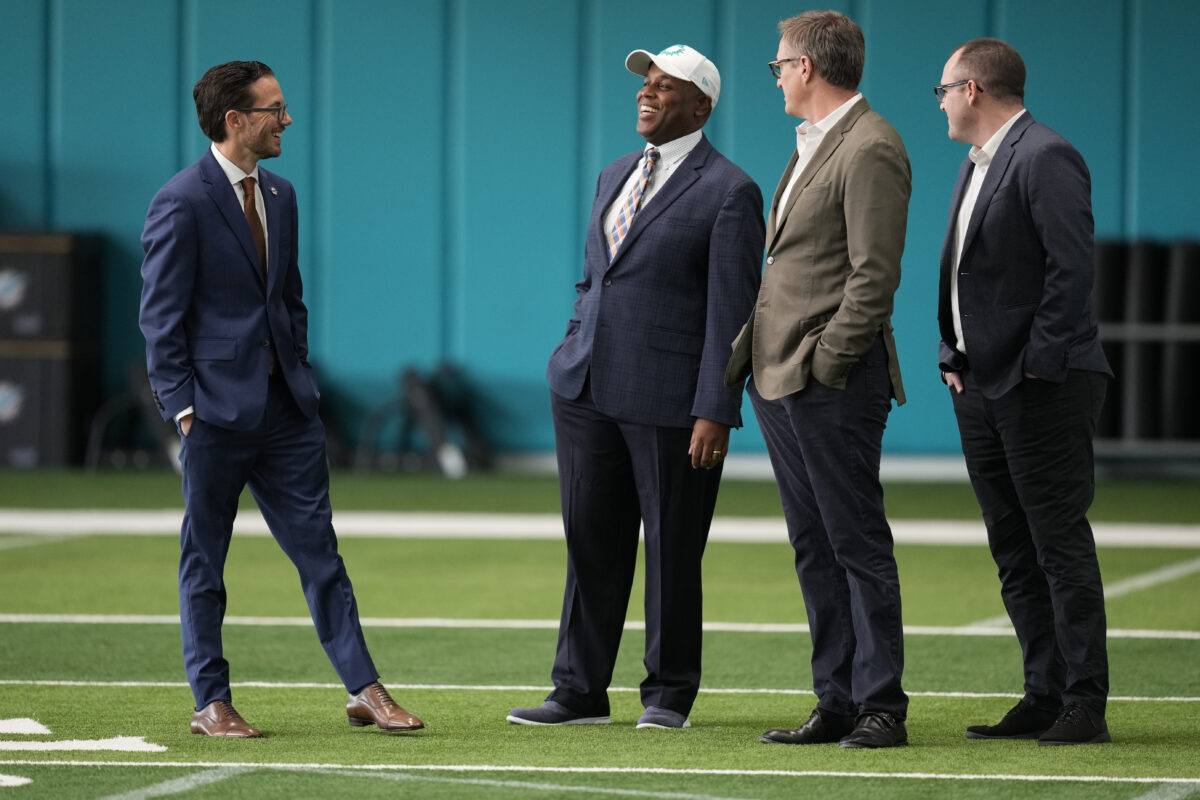Monday, April 4 marks the first day of the 2022 Miami Dolphins season and officially launches the Mike McDaniel era. As he has indicated during his press conferences and media appearances, there will be a difference from the pre-McDaniel era. That time isn’t how we should view or predict the outlook of the latest Dolphins team.
They’re a team that hasn’t only retained its core but solidified it with savvy free-agent signings of role and complementary players such as Chase Edmonds, Raheem Mostert and Cedrick Wilson Jr. to name a few. The big splash moves like Terron Armstead and Tyreek Hill as well as the mastery of the salary cap in extensions and renegotiations have created hype within the Dolphins faithful unseen in twenty years.
Not only have the Dolphins improved their roster, but they also fixed their salary cap steadily over the last several seasons. Learning from past mistakes that included gaudy and unnecessary contracts, trades leading to dead cap issues and not retaining talent, there’s considerable growth here.
In what seemed like one months’ time, Miami fixed those stigmas about the front office and player management and development. The big names of Emmanuel Ogbah and Mike Gesicki, both once feared to be leaving within the fan base, seem happy as can be to be staying in Miami. Gesicki, with the franchise tag, could have a similar offseason next year unless the two sides agree to a long-term contract, which is very possible.
Armstead chose Miami instead of staying on the team that originally drafted him, the New Orleans Saints, or other possible suitors. Hill picked Miami over another AFC East team, and even a number of San Francisco 49ers followed McDaniel to Miami, coaches and players alike.
What’s even more telling of excellence on the executive level is the trimming of that dead cap and the fact that Miami is still in a very flexible financial situation. Credit to Brandon Shore, who handles the cap in tandem with Grier, for creating millions in available space for 2022 even after the bonanza of signings.
This cap flexibility is made possible by several smart moves including the Byron Jones restructure, the Xavien Howard renegotiation of a previous pair of renegotiations and the recent DeVante Parker trade to the New England Patriots.
That Parker trade not only created some cap space, but it also netted a third-round draft pick in 2023, while only losing a 2022 fifth in the process. Grier has had relative success in his third-round draft history. Kenyan Drake and Jerome Baker were the standouts from 2016 and 2017, respectively. Then there’s Michael Deiter, Brandon Jones and Hunter Long. While the jury is still out on this trio before a true evaluation grade, the potential is certainly there for success.
Miami has gone from a dead cap nightmare to a dream of relief, much like when a student loan or credit card debt is paid off.
Miami Dolphins dead cap in the post-Adam Gase rebuild:
2019: $67M (#1 most)
2020: $39M (#4 most)
2021: $24M (#18 most)
2022: $ 8M (#25 most)this team finally spending salary cap on players on its own roster, instead of paying for players on other teams rosters
— Warren Sharp (@SharpFootball) April 3, 2022
This formula, mixed with the 2023 draft vault Grier has accumulated, has created a win-win situation for the Dolphins. While still on his rookie contract for two or even three more years, Tua Tagovailoa has every reason to succeed this season and beyond.
Should that not happen at a rate acceptable to this new regime of coaches and the current front office, that cache of picks could be an insurance policy, which would be better used to enhance a team, rather than restart at the most important position on the field. The point is, either way, they’re prepared. In terms of this mindset, it’s merely better to have and not need, as opposed to needing and not having.
If there’s anything Miami does have, which is a certainty, is options. To go along with the usual course of hope and a side of potential this time of year.
[listicle id=448683]
